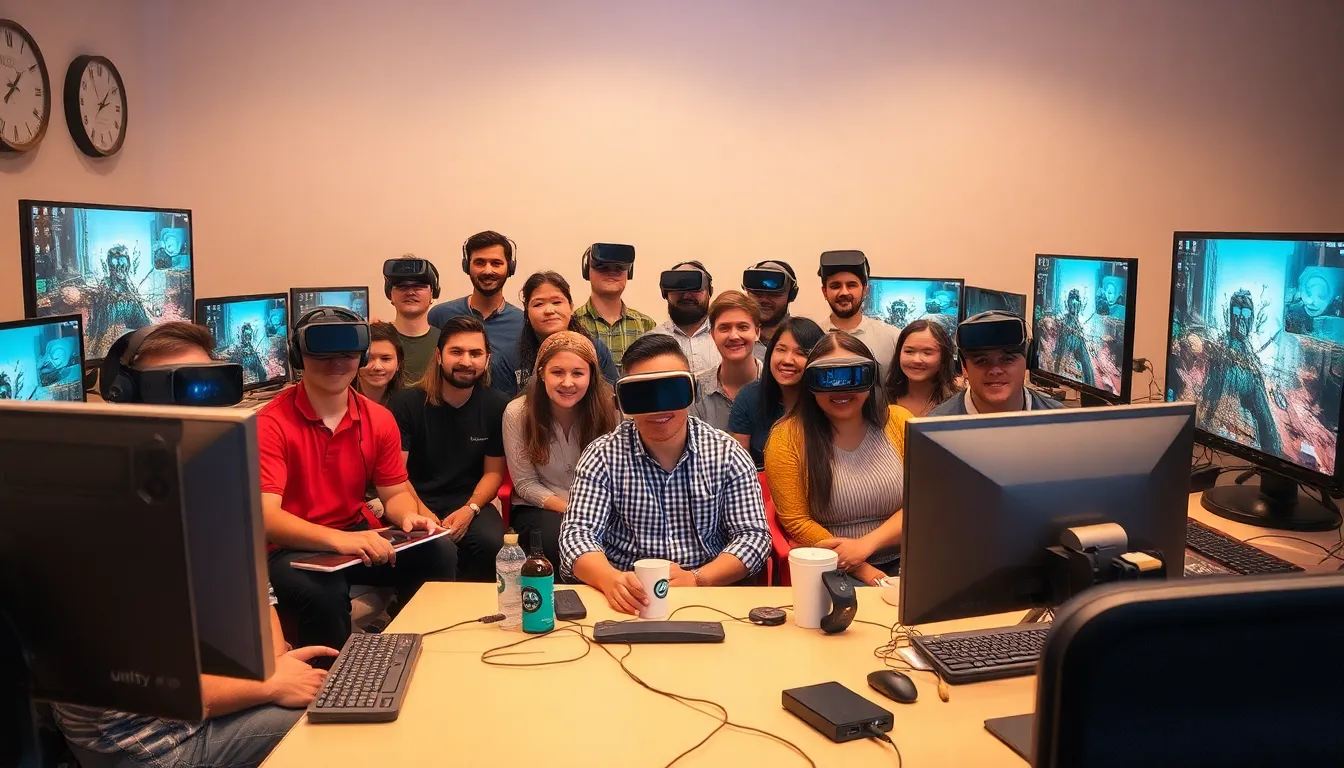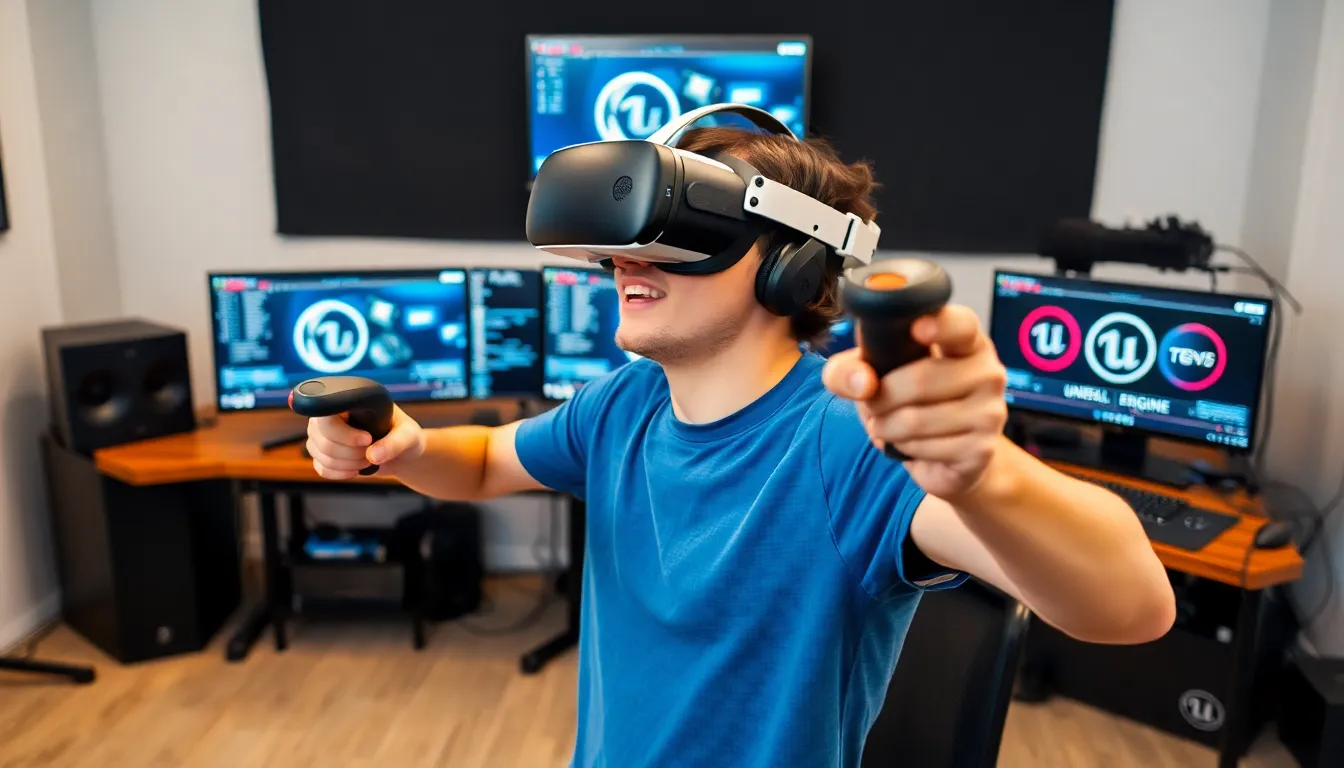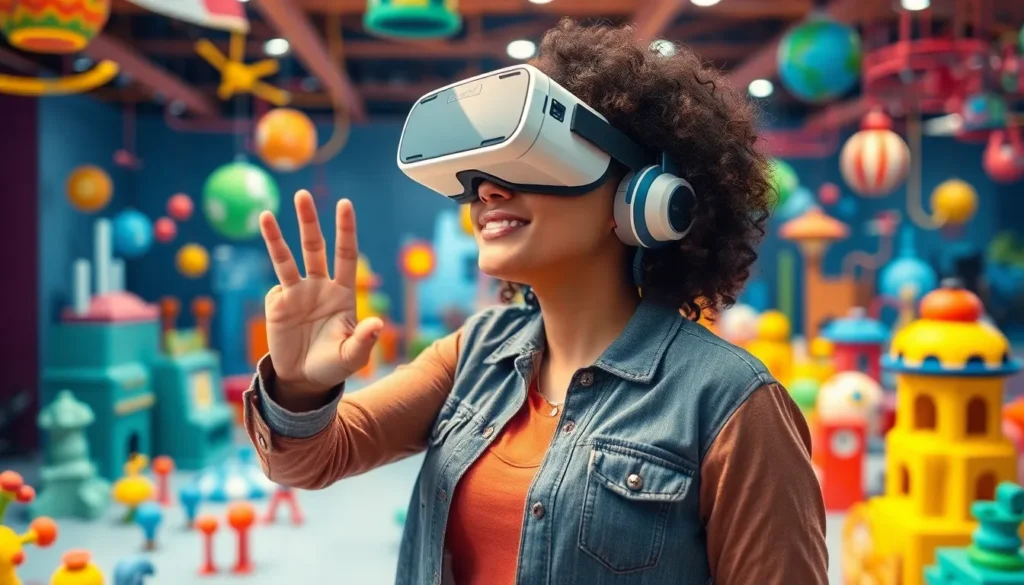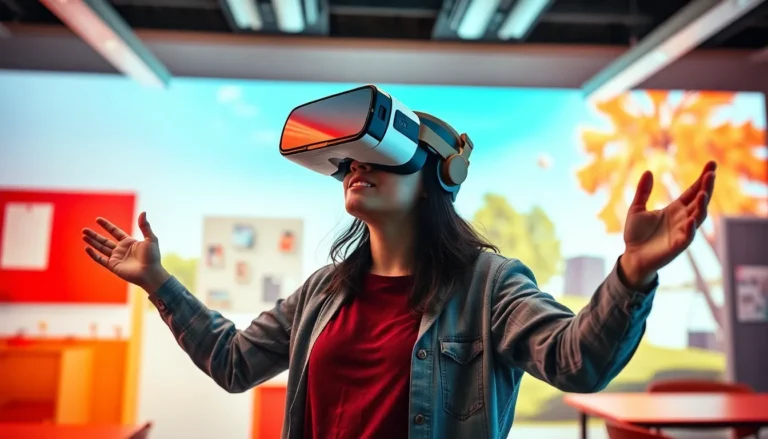Table of Contents
ToggleImagine stepping into a world where your wildest ideas come to life right before your eyes. Welcome to the realm of virtual reality, where content creation isn’t just a task—it’s an adventure! As VR technology evolves, so does the way creators engage audiences. Gone are the days of flat screens and static images; now, it’s all about immersive experiences that leave a lasting impression.
Overview of Content Creation in VR
Content creation in virtual reality (VR) involves producing immersive experiences that engage users in ways traditional media cannot. This process includes various elements such as 3D modeling, sound design, and interactivity, all contributing to a rich user experience.
Developers utilize specialized software to design environments that users can explore. Programs like Unity and Unreal Engine provide robust tools for creating realistic visuals and interactions. Filmmakers are also adapting their techniques to capture stories in 360 degrees, enabling a more engaging narrative perspective.
Consider the way VR content can change storytelling. Unlike conventional films, which are linear, VR allows users to dictate their journey through the narrative. Users can look around and even make choices that affect the outcome, providing a unique, personalized experience.
Platforms dedicated to VR content sharing have emerged, creating communities around this technology. These platforms enable creators to showcase their work and receive feedback from users worldwide. Collaboration often occurs, encouraging the sharing of techniques and best practices among creators.
Monetization of VR content has gained traction, with various models available. Subscription services, one-time purchases, and in-app purchases offer flexibility for creators and users alike. As the VR market expands, opportunities for monetization continue to evolve.
The future of content creation in VR remains bright as technology advances and becomes more accessible. The potential for innovative storytelling and immersive experiences continues to drive interest from creators and consumers. Integrating VR into various industries, from education to tourism, further emphasizes its versatility and impact.
Key Tools for VR Content Creation


Effective VR content creation relies on the right tools. Various software and hardware options facilitate the immersive experience.
Software Options
Unity stands out as a popular choice among creators for VR development. Its flexible interface accommodates both beginners and advanced users. Unreal Engine competes closely, offering stunning graphics and powerful design capabilities. Render documentation and tutorials are abundant for both platforms, guiding creators through the intricate process of VR content development. Other options include A-Frame and Blender, which cater to specific use cases like web-based experiences and 3D modeling. These software tools collectively empower developers to craft engaging VR environments and narratives.
Hardware Requirements
Quality VR content creation demands robust hardware. A high-performance computer serves as the foundation, typically featuring multi-core processors and at least 16 GB of RAM. Graphics cards from Nvidia or AMD ensure smooth rendering of complex visuals. VR headsets, such as Oculus Rift or HTC Vive, are essential for testing and experiencing created content. Additionally, motion controllers enhance interactivity, allowing creators to navigate virtual spaces intuitively. A reliable tracking system further improves the overall user experience, making hardware selection critical for effective VR content development.
Best Practices for Creating Immersive Experiences
Creating immersive experiences in VR requires a strong understanding of various practices. Following best practices can transform content into captivating interactions.
Storytelling Techniques
Effective storytelling in VR utilizes non-linear narratives. Creators should focus on creating dynamic environments to enhance plot development. Integrating elements like character perspectives allows users to engage with the story. Employing environmental storytelling helps convey emotions and themes. For example, visual cues in a scene can suggest backstory without dialogue. Balancing pacing maintains user engagement, ensuring a fluid experience.
User Interaction Design
User interaction in VR emphasizes intuitive controls. Designers prioritize gesture-based interactions for a natural feel. Ensuring feedback mechanisms, like haptic responses, enhances engagement. Creators must consider user comfort when designing motion paths. For instance, smooth transitions reduce motion sickness for better immersion. Integrating customizable options allows users to tailor experiences to their preferences. Engaging tutorials promote user familiarity with controls, encouraging deeper exploration of the virtual environment.
Challenges in VR Content Creation
Creating content in virtual reality poses numerous challenges that require careful consideration. These difficulties can impact both the development process and user experience.
Technical Limitations
Technical limitations significantly affect the efficiency of VR content creation. Hardware capabilities often constrain the complexity of environments, with high-performance computers necessary for rendering detailed graphics. Limited battery life of VR headsets can also interrupt user immersion, restricting extended use. Moreover, issues such as latency and motion tracking inconsistencies hinder realistic user interactions. Effective collaboration among creators also suffers from the varying standards of VR platforms, which complicates the integration of assets and content sharing.
Audience Engagement
Engaging audiences in VR involves unique challenges that demand innovative approaches. Users expect interactive experiences tailored to their preferences, making simplistic content less appealing. Attention spans in virtual environments can be shorter, requiring creators to deliver compelling narratives quickly. Designing intuitive user interfaces is crucial; difficulties in navigation can lead to frustration and disengagement. Additionally, addressing comfort issues, such as motion sickness, remains vital. Creators need to implement solutions like optimized movement mechanics and familiar controls to enhance user satisfaction and retention in immersive experiences.
Future Trends in Content Creation in VR
Growing interest in VR technology is driving innovative trends in content creation. Enhanced interactivity captures user engagement, allowing creators to design experiences that respond to users’ actions. Developers increasingly incorporate artificial intelligence (AI) to personalize narratives, tailoring content based on user preferences and behavior.
Emergence of social VR platforms facilitates collaborative content creation. Increased social interaction among users enables creators to develop shared experiences, transforming how audiences consume VR content. Tools that support multiple user inputs are becoming essential for fostering community engagement.
Augmented reality (AR) is blending with VR, leading to hybrid experiences. Such combinations allow users to engage with the real and digital worlds simultaneously, expanding creative possibilities. Content creators are exploring ways to leverage AR features, bridging the gap between virtual environments and physical realities.
Sustainability is also a rising focus in VR content creation. Eco-friendly practices, including reducing energy consumption and utilizing sustainable resources, are receiving attention. Developers are investigating ways to minimize the carbon footprint of VR experiences while maintaining high-quality standards.
Advancements in hardware technology are reshaping expectations for VR content. Increased processing power enables more complex, immersive environments that enhance user experiences significantly. As VR headsets improve in comfort and affordability, accessibility grows, inviting a broader audience into virtual spaces.
Finally, the importance of data analytics in content creation is emerging. Creators are using metrics to understand how audiences interact with VR experiences better. By analyzing user behavior, they can refine their storytelling techniques and improve engagement, ensuring that content remains relevant and captivating.




